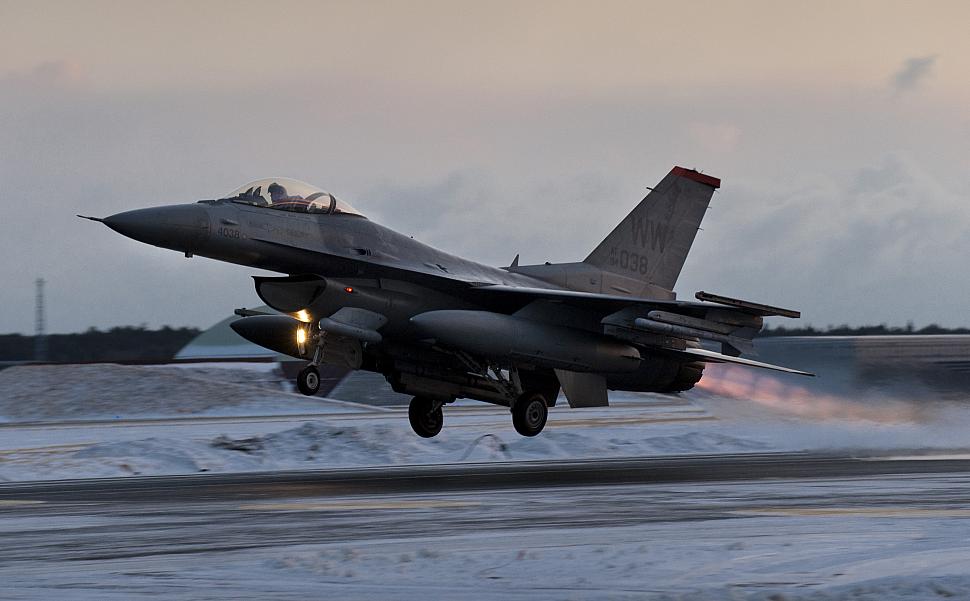Fighter Jet News
F-16 Fighting Falcon News
Underwater survey company recovers F-16 wreck
January 10, 2013 (by
Asif Shamim) -
Underwater survey company Phoenix International, based in the USA, has successfully completed an underwater search and recovery of a USAF F-16 aircraft from over 16,400 feet of sea water (fsw) off the coast of Japan in an operation which cost $1.4M.
Underwater search operations commenced using the Navy's search system, ORION, which dive to a depth of 20,000 fsw. After initially searching in a planned area spanning a 2 x 4 nautical mile (nm) area, search operations shifted to another high-probability area where the F-16 debris field was quickly identified.
In early August 2012, at the direction of the Naval Sea Systems Command's Director of Ocean Engineering, Supervisor of Salvage and Diving (SUPSALV), Phoenix mobilised the Navy’s ORION deepwater side scan sonar system, the CURV 21 remotely operated vehicle (ROV), and the Navy's motion compensated, 30,000 pound Fly-Away Deep Ocean Salvage System (FADOSS).
After finding the debris, Phoenix personnel deployed the CURV 21 deepwater ROV system and conducted a detailed video survey of the area in which several high-priority items, including the Flight Data Recorder and engine, were identified. Over the next 10 days, the Phoenix team piloted the CURV 21 ROV through 12 dives and recovered all critical items desired by the embarked accident investigating board.
The logistics for this operation alone were complicated. All equipment was transported over land from Phoenix's facility in Largo, Maryland, to Dover Air Force Base in Delaware. From there, military transport aircraft moved the equipment to Hawaii, where the gear was loaded aboard USNS Navajo (T-ATF 169) which sailed to the crash site.
Spokesman for Phoenix International, Peter LeHardy said the company had a Navy contract for such work as deep as 20,000 feet. "Recovering the F-16 was well within our capabilities," he adds. "Our deepest effort to date was a recovery of a subsea sensor back in 2010, at a depth of 18,558 feet."
In early August 2012, at the direction of the Naval Sea Systems Command's Director of Ocean Engineering, Supervisor of Salvage and Diving (SUPSALV), Phoenix mobilised the Navy’s ORION deepwater side scan sonar system, the CURV 21 remotely operated vehicle (ROV), and the Navy's motion compensated, 30,000 pound Fly-Away Deep Ocean Salvage System (FADOSS).
After finding the debris, Phoenix personnel deployed the CURV 21 deepwater ROV system and conducted a detailed video survey of the area in which several high-priority items, including the Flight Data Recorder and engine, were identified. Over the next 10 days, the Phoenix team piloted the CURV 21 ROV through 12 dives and recovered all critical items desired by the embarked accident investigating board.
The logistics for this operation alone were complicated. All equipment was transported over land from Phoenix's facility in Largo, Maryland, to Dover Air Force Base in Delaware. From there, military transport aircraft moved the equipment to Hawaii, where the gear was loaded aboard USNS Navajo (T-ATF 169) which sailed to the crash site.
Spokesman for Phoenix International, Peter LeHardy said the company had a Navy contract for such work as deep as 20,000 feet. "Recovering the F-16 was well within our capabilities," he adds. "Our deepest effort to date was a recovery of a subsea sensor back in 2010, at a depth of 18,558 feet."
Related articles:
Forum discussion:
Tags
- F-16 pilot rescued at sea returns to Misawa (2012-07-27)
- F-16C jet crashes off coast of Hokkaido (2012-07-22)
- F-16 Fighting Falcon news archive
Forum discussion:
- F-16C jet crashes off coast of Hokkaido ( 55 replies)
Tags

